ASUS ROG Zephyrus G14 Hands On: Redefining Portability For Gaming Laptops
ASUS announced the ROG Zephyrus G14 during CES 2020. Its main attraction is no doubt the optional AniMe Matrix LED array on its lid. But that aside, the laptop actually has a lot of other things going for it. I had the opportunity to get some time with the laptop, and here’s what I think of it.
Like all the other Zephyrus gaming laptops that came before it, the G14 is very thin, and as light as it looks. And because it has a 14-inch display with thin bezels, its overall footprint is more akin to what you’d expect from a 13-inch laptop. I’d go as far as to say that this is the perfect size for laptops, but that’s just me.
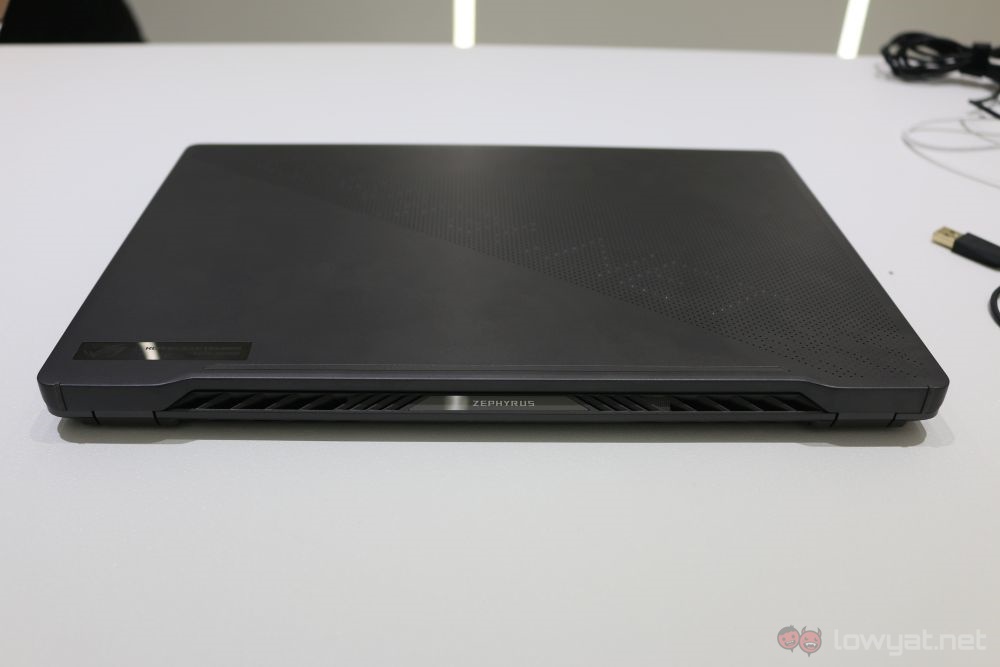
On the front, when you pop the lid up, you’ll be glad to know that the ASUS ROG Zephyrus G14 looks a lot more like an ordinary laptop compared to its predecessors. The keyboard is located at the normal space, rather than close to the bottom edge of the slate.
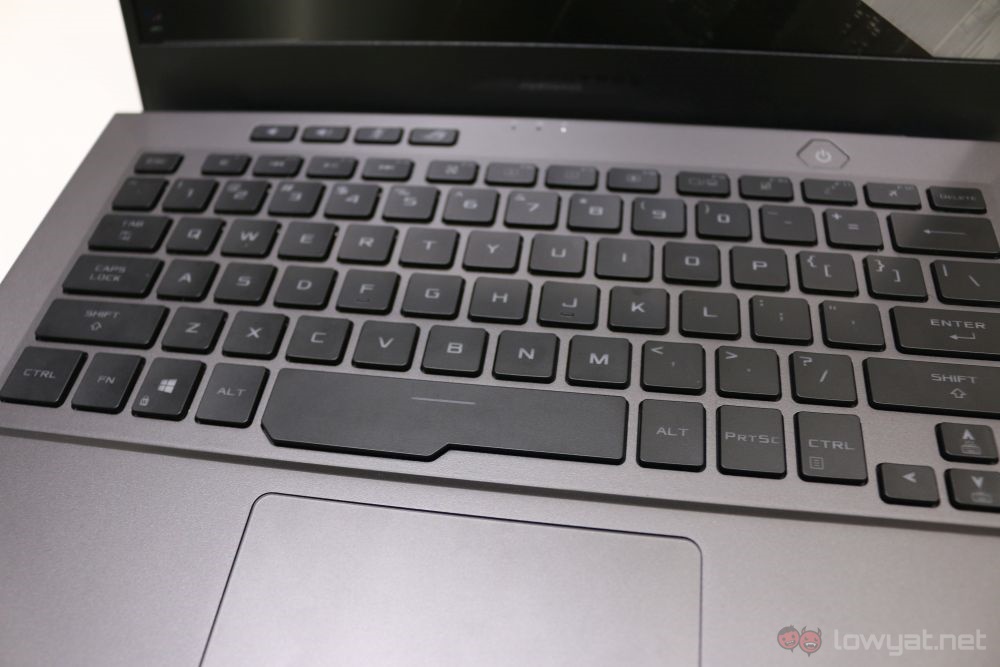
The keyboard is much improved from previous iterations. It still retains the enlarged spacebar, which is useful for a lot of games. But the keys overall feel a lot better to type with. They’re a little stiff, but their travel distance and actuation point feel just about right.
This standard keyboard location allows the G14 to also have a normal mouse pad in the usual position. It’s responsive enough, but as a gaming laptop it’s unlikely to see much use. Unfortunately, this means that you don’t get a number pad. It’s also not part of the mousepad the way it was in previous iterations. Though, it’s unlikely a much used feature on a gaming laptop either way.
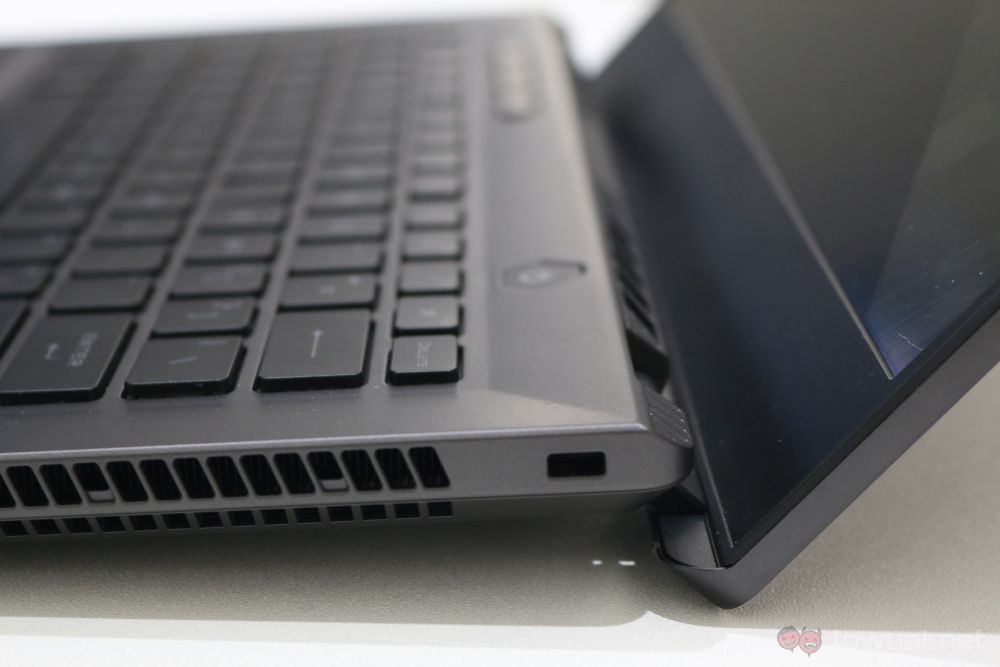
Another departure from previous iterations of the Zephyrus line is the lack of the base that separates from the main body. Rather than using that mechanism, ASUS as opted instead to use the ErgoLift hinge. We first saw this with the ZenBook line back in 2018, and it fits the Zephyrus G14 quite well.
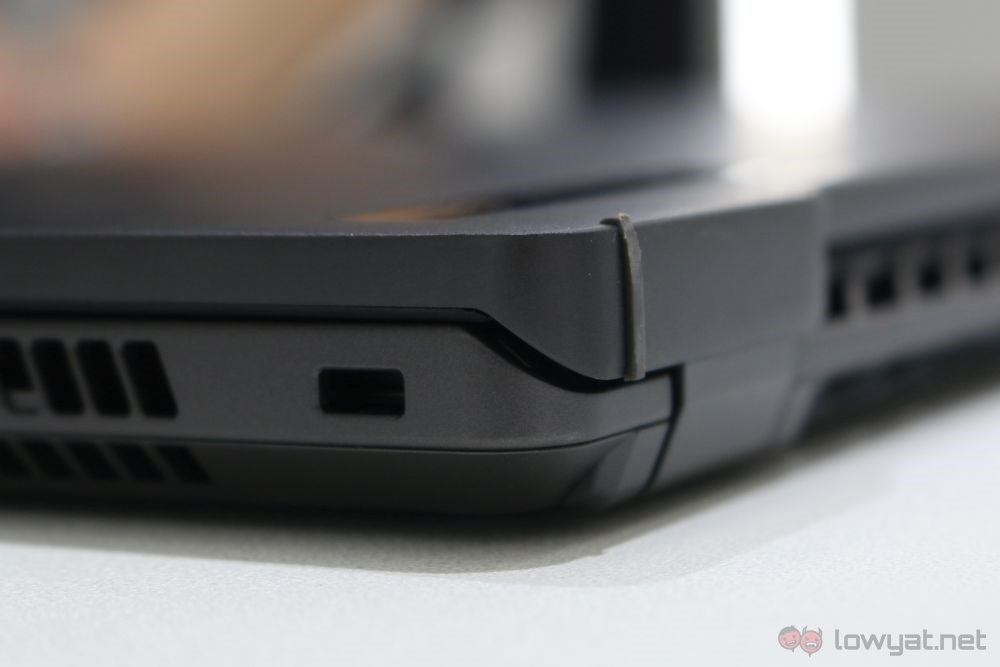
This means that it comes with a more conventional cooling system on the inside. That said, ASUS representatives say that the fan has been tweaked to slow down the accumulation of dust.
And finally, we get to the main attraction of the ROG Zephyrus G14 – the AniMe Matrix LED array. ASUS didn’t go for RGB here, and the LEDs are all white. This, unfortunately, makes the Eclipse Grey version more visually appealing than the Moonlight White colour.
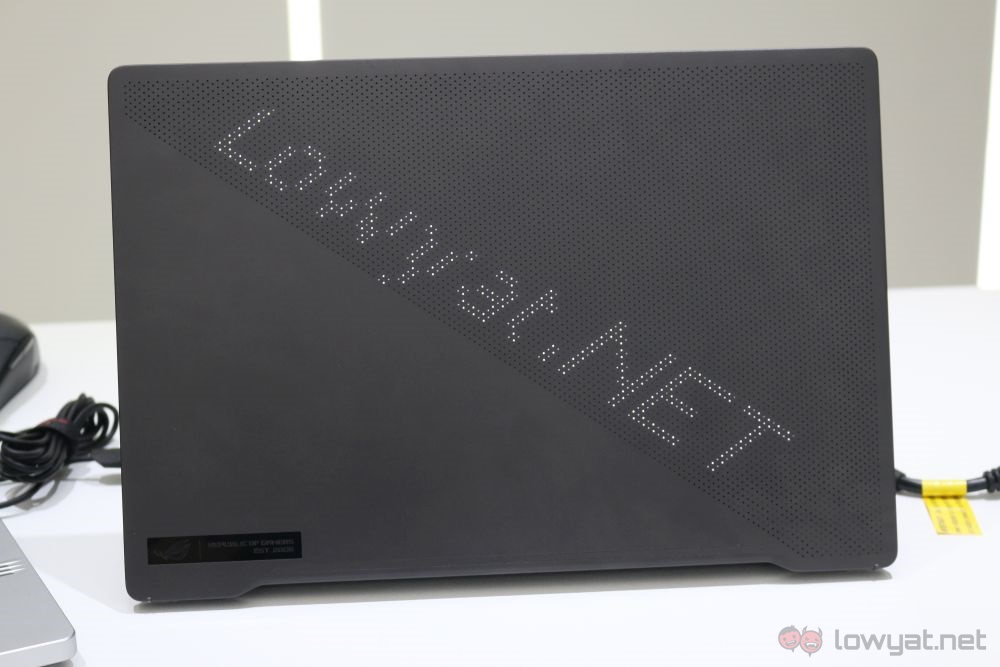
Then there’s the AniMe Matrix itself. The lid comprises of 6536 dots, but only 1215 LEDs. This means that you won’t be able to make use of every dot you see, with the edges being dead zones much like a display’s bezels.
That said, you could still do a fair bit with the AniMe Matrix, as far as customisations go. Animated GIFs are very smooth, but surprisingly, the same can’t be said about rolling text. It also looks like ASUS has not finalised the software for it but the company says the final verison will be part of the Armory Crate software.
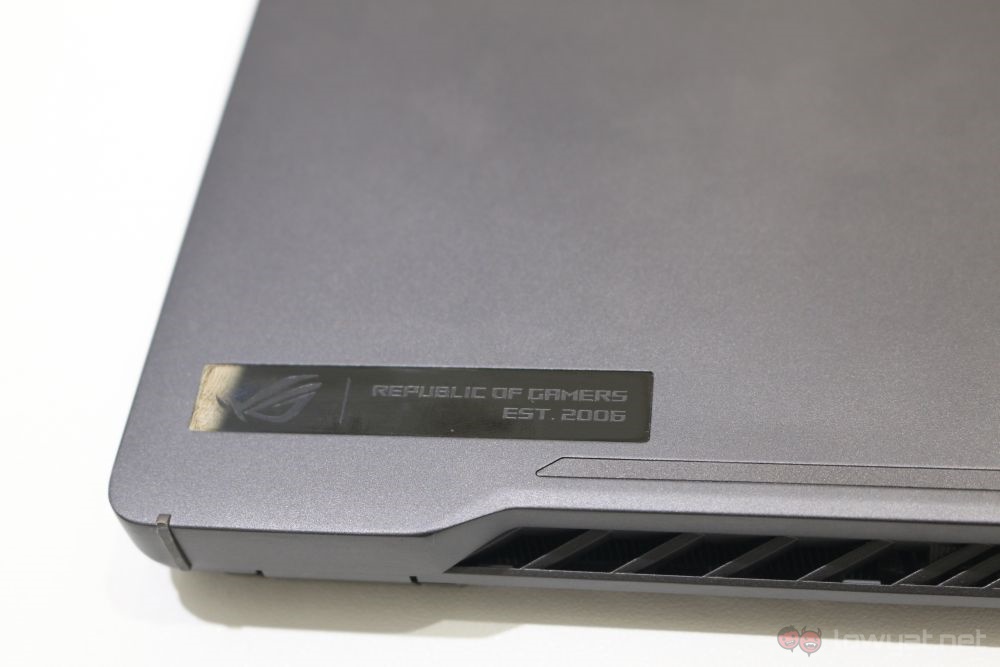
At this point, we’d usually move on to gaming performance, but oddly enough there were none to be found on the demo units. There shouldn’t be any worry on that department though, considering that the ASUS ROG Zephyrus G14 comes with an AMD Ryzen 7 4800HS processor and up to an Nvidia GeForce RTX 2060 GPU.
Overall, the ASUS ROG Zephyrus G14 looks to be an impressive gaming laptop, with the AniMe Matrix being an added visual appeal. Though all this does suggest quite the high price point when it arrives on our shores. We’ll find out for sure when ASUS Malaysia launches it officially.
The post ASUS ROG Zephyrus G14 Hands On: Redefining Portability For Gaming Laptops appeared first on Lowyat.NET.
from Lowyat.NET https://ift.tt/3687TcX
Labels: Lowyat
0 Comments:
Post a Comment
Subscribe to Post Comments [Atom]
<< Home